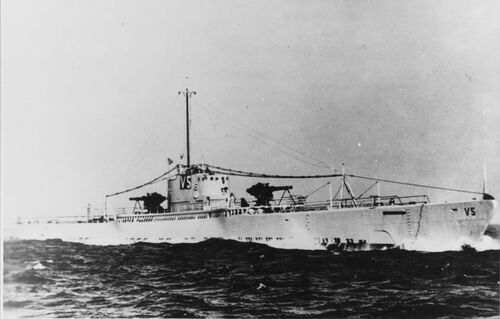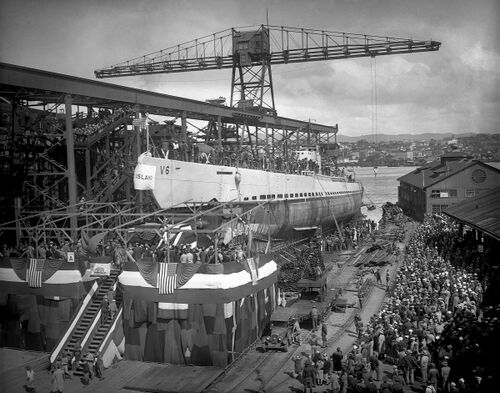V-5 and V-6
Design and Construction Notes
These two boats were renamed Narwhal and Nautilus on February 19, 1931 and redesignated into the general submarine series later that year. Along with their near sister Argonaut they were frequent participants in fleet exercises in the 1930's, working the kinks out of the fleet submarine concept.
Nautilus was refitted in 1941 to carry 19,320 gallons of aviation gasoline, in a scheme to use her to refuel long range sea planes. While the concept was tested briefly and judged successful, the Nautilus was not used in this capacity during the war.
Both boats were refitted in 1941 and 1942 with four additional topside torpedo tubes, two forward and two aft, in an attempt to upgrade their firepower. These single shot tubes were not reloadable at sea and the weapons in them tended to be very unreliable due to the inability to perform maintenance on them at sea. The tubes were retained to the end of the war but were not popular with the crews. See the submarine plans and blueprints page and the individual boat pages below for more information.
Narwhal and Nautilus were underpowered and their great size and large decks made them slow divers and rather clumsy underwater. Despite these issues, they were moderately successful during the war, sinking a number of enemy ships. Thoroughly modernized, they served the Navy well as special mission submarines, their large size allowing them to land raiding parties and running supplies to guerilla groups in the Philippines and elsewhere.
By the summer of 1945 they were thoroughly worn out and were sent back to the states for an honored retirement and decommissioning.V-5/Narwhal (SC-1, later SS-167)

V-6/Nautilus (SC-2, later SS-168)

Page created by:
Ric Hedman & David Johnston
1999 - 2023 - PigBoats.COM©
Mountlake Terrace, WA, Norfolk, VA
webmaster at pigboats dot com
